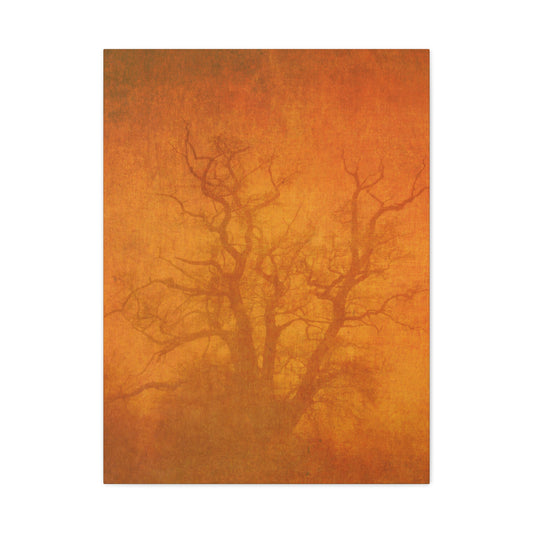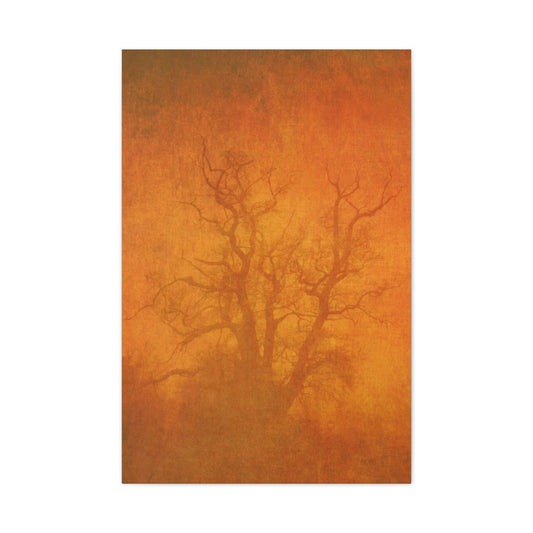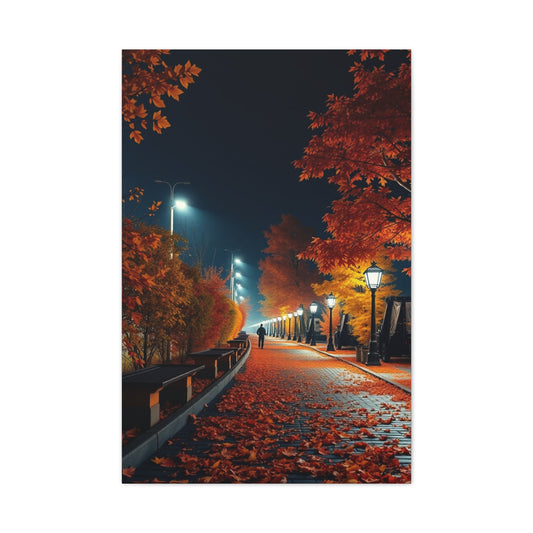Interior wall cladding represents a sophisticated architectural enhancement involving the strategic application of supplementary material layers upon existing structural surfaces. This comprehensive exploration showcases an exceptional collection of wall covering techniques designed to transform ordinary spaces into extraordinary living environments.
Wall cladding installations serve as protective and decorative overlays applied to interior surfaces within contemporary urban residences and traditional dwellings alike. These applications introduce refined elegance while reinforcing structural integrity and visual appeal. The growing popularity of interior cladding systems stems from numerous compelling advantages that modern homeowners increasingly appreciate.
Environmental sustainability emerges as a primary consideration, with many cladding materials demonstrating exceptional fire resistance properties without releasing hazardous toxins during exposure to elevated temperatures. This characteristic provides peace of mind for safety-conscious property owners seeking responsible building solutions.
Economic efficiency represents another significant benefit, as most cladding systems offer reasonable pricing combined with exceptional longevity. These installations typically provide substantial returns on investment through reduced heating and cooling expenditures, thanks to enhanced thermal regulation properties that maintain comfortable indoor temperatures throughout seasonal variations.
Installation convenience ranks among the most attractive features, with most cladding systems requiring minimal time investment and offering straightforward maintenance protocols. Professional installation teams can complete most residential applications efficiently while minimizing household disruption during implementation phases.
Design versatility allows homeowners to explore various installation orientations including vertical, horizontal, and angular applications. This flexibility enables customized aesthetic expressions that complement existing architectural elements while introducing distinctive visual characteristics that reflect personal preferences and lifestyle requirements.
Performance characteristics encompass superior noise control capabilities, enhanced acoustic properties, moisture resistance, and thermal insulation benefits. These functional advantages contribute to improved living comfort while addressing common residential challenges such as sound transmission and temperature regulation.
Masonry Cladding Applications for Stairway Enhancement
Masonry cladding has long been a favored choice for enhancing stairways in residential and commercial buildings, particularly for its durability, aesthetic appeal, and functional properties. Among the various materials available, brick cladding stands out as a timeless solution, merging vintage aesthetics with rustic charm. This cladding type can transform stairways, creating a welcoming and classic look while providing robust protection against wear and tear.
The enduring popularity of brick masonry cladding stems from its superior performance in high-traffic areas, making it an ideal option for stairways. It offers a unique combination of traditional style and long-term functionality, ensuring that spaces maintain their integrity even after years of use. Whether used in modern homes or historic restorations, brick provides an authentic feel that resonates with a broad range of architectural styles, from rustic farmhouses to contemporary urban lofts.
Durability and Long-Term Performance
One of the most important benefits of masonry cladding for stairways is its exceptional durability. Brick materials, known for their inherent strength, are resistant to wear, damage, and the effects of environmental pollutants. In stairway environments, which often experience constant foot traffic, the durability of brick cladding proves indispensable. Whether installed in indoor or outdoor stairwells, brick withstands harsh elements, high traffic, and seasonal changes, ensuring longevity without frequent repairs or replacements.
Additionally, brick cladding offers excellent thermal regulation. Its natural ability to absorb and retain heat helps moderate temperature fluctuations in stairways, making it ideal for areas with substantial vertical spaces, such as multi-story homes or buildings. The insulation properties of brick reduce heat loss during winter and keep the space cooler in the summer, enhancing comfort in stairways that might otherwise become cold or uncomfortably warm.
Environmental Resistance and Weatherproofing
Another standout feature of masonry cladding is its resistance to moisture and environmental pollutants. Bricks have excellent water resistance, preventing moisture from seeping into the structure and causing potential damage. When properly sealed during installation, brick cladding provides an airtight barrier against water infiltration, ensuring that stairways remain dry and free from mold, mildew, or rot.
Professional installation techniques are essential for ensuring that the cladding performs optimally. Proper anchoring, weather sealing, and the installation of expansion joints help prevent moisture infiltration and structural shifting over time. Additionally, ensuring that drainage provisions are integrated into the design allows water to flow freely away from the building, further preventing damage caused by moisture accumulation.
Unlike other materials, such as wood or drywall, which may deteriorate when exposed to the elements or high humidity, brick cladding maintains its integrity for years with minimal upkeep. The process of installation requires careful planning to ensure that brick units are anchored securely and any expansion or contraction is accounted for.
Aesthetic Versatility and Color Coordination
Brick cladding offers vast opportunities for aesthetic coordination, harmonizing effortlessly with a range of interior and exterior design elements. The natural hues of brick, from deep reds to soft browns and subtle grays, complement a wide spectrum of architectural features, such as wrought-iron railings, polished metal fixtures, or modern wooden accents. When integrated into stairways, these rich, earthy tones enhance the overall ambiance, adding a sense of warmth and sophistication.
The color palette of brick cladding is highly versatile, allowing homeowners and designers to select shades that match the surrounding décor. For example, lighter shades of brick can help create a bright, airy look, while deeper tones can give a more dramatic, cozy, or rustic feel. This adaptability makes brick cladding an ideal choice for stairways in both traditional and contemporary settings.
Additionally, the natural variations found in each brick create texture and depth, contributing to a dynamic visual experience. Subtle patterns and shadow effects created by the individual characteristics of each brick unit add dimensional interest, preventing the surface from appearing flat or monotonous. As light shifts throughout the day, the natural changes in the brick’s color and texture make for a constantly evolving visual scene, enhancing the beauty and liveliness of the stairway.
Ease of Maintenance and Longevity
Maintenance is a critical consideration when selecting cladding for high-traffic areas like stairways. Brick cladding is incredibly low-maintenance compared to other materials, making it a practical and cost-effective solution in the long run. Unlike wood or drywall, which may require regular painting or refinishing, brick cladding needs little more than periodic cleaning and occasional repointing to maintain its appearance.
The durability of brick ensures that it resists the typical wear and tear associated with high foot traffic. In stairways, where the cladding is subject to frequent contact with shoes, dust, and debris, brick proves to be highly resistant to scratches, stains, and chips. As the material naturally resists dirt buildup, keeping brick stairways clean involves little more than periodic sweeping and washing.
Repointing, which involves reapplying mortar between the bricks, is the main upkeep task required. This is a simple process that can be done as needed to maintain the structural integrity and aesthetic appearance of the stairway. Regular inspections ensure that the brickwork remains in excellent condition, and repairs can be performed swiftly to avoid extensive damage.
Enhancing Architectural Appeal and Character
Masonry cladding, particularly brick, can be used to enhance the architectural appeal and character of stairways. The unique, timeless qualities of brick elevate the design of any space, whether in a traditional home or a more modern building. The rough-hewn texture and classic look of brick exude warmth and authenticity, providing a distinct visual character that is unmatched by synthetic materials.
Whether used in interior or exterior stairways, the application of brick cladding can add an element of rustic charm to urban environments or provide an elegant, vintage feel to country or cottage-style homes. In addition to its textural beauty, brick cladding pairs beautifully with other materials, such as wood, glass, and metal, to create unique design contrasts that make stairways stand out as statement architectural features.
For exterior stairways, especially those leading up to a main entrance, brick cladding enhances curb appeal and leaves a lasting impression. In these settings, brick cladding serves not only a protective function but also a decorative one, contributing to the aesthetic unity of the building’s exterior while blending with the surrounding landscape.
Sustainable and Environmentally Friendly Choice
As sustainability becomes an increasingly important consideration in design, the choice of cladding materials that have a minimal environmental impact is paramount. Brick cladding stands out as a highly sustainable option, as it is made from natural, locally sourced materials that have a low carbon footprint. The longevity of brick further contributes to its sustainability, as its durability reduces the need for replacements or repairs over time.
Additionally, the natural insulation properties of brick contribute to energy efficiency by reducing the amount of heating and cooling required in stairways and surrounding areas. In colder climates, brick’s thermal mass helps maintain stable indoor temperatures by absorbing heat during the day and releasing it at night, leading to reduced energy consumption.
Moreover, brick cladding does not require frequent painting or chemical treatments, which helps to preserve the health of the surrounding environment. Since brick is a natural material, it is free from harmful chemicals and is fully recyclable, making it an environmentally responsible choice for eco-conscious homeowners and builders.
Natural Stone Granite Applications for Family Entertainment Areas
Granite is widely regarded as one of the most durable and sophisticated natural stones, and its application in family entertainment areas can truly elevate the atmosphere. Whether used as accent walls behind entertainment systems, as feature walls, or in smaller accent details, granite has the power to transform these spaces into visually striking, highly functional environments. The inherent beauty of granite combined with its exceptional properties, such as sound absorption, thermal insulation, and long-term durability, makes it a prime choice for creating family-friendly entertainment zones that cater to both aesthetic appeal and performance.
Aesthetic Excellence and Focal Point Creation
One of the primary advantages of incorporating granite into family entertainment areas is its ability to create a dramatic focal point. Large granite panels behind entertainment centers or televisions can instantly anchor the entire room, providing a bold backdrop that enhances the visual appeal of surrounding furnishings and decor. The naturally occurring patterns in granite—ranging from subtle specks to bold veins—add complexity and depth to a room’s design, drawing attention and creating an eye-catching feature that demands admiration.
Granite's rich palette of colors, from warm reds and browns to cool blues and grays, means that it can easily complement a variety of interior design schemes, whether you’re aiming for a modern, minimalist, rustic, or traditional aesthetic. The timeless appeal of granite also ensures that these applications remain relevant, even as design trends evolve over the years. Additionally, granite's reflective qualities, combined with its intricate surface patterns, allow it to enhance the lighting within the room, creating dynamic plays of light and shadow that add to the space’s drama.
Sound Dampening and Acoustic Enhancement
In family entertainment areas, especially those designed for watching movies or listening to music, sound quality is of paramount importance. Granite’s acoustic properties offer significant advantages for sound control. This stone material naturally dampens sound vibrations, absorbing unwanted echoes and enhancing audio clarity. The denser the material, the better it absorbs sound, making granite an excellent choice for creating spaces where superior audio performance is desired.
In open-plan homes or spaces with large windows and hard surfaces, controlling sound can often be challenging. Granite’s ability to reduce noise levels and prevent excessive reverberation helps ensure that audio systems perform at their best. By mitigating sound disturbances, granite walls or panels contribute to an immersive experience for watching movies, listening to music, or enjoying video games, making it an ideal choice for entertainment-focused rooms.
Thermal Insulation and Energy Efficiency
Another significant advantage of granite is its thermal insulation properties. Due to the stone’s natural density, it can absorb and retain heat, helping to regulate indoor temperatures. This characteristic is especially beneficial in family entertainment areas, where the temperature can fluctuate based on factors like outdoor weather or the use of electronic devices.
In rooms equipped with granite surfaces, temperatures tend to remain more stable, as the stone helps to retain warmth during colder months and stay cool during the summer. This can lead to reduced energy consumption and lower heating and cooling costs. Given the growing demand for energy-efficient homes and environmentally sustainable materials, granite offers long-term benefits in reducing a household’s carbon footprint.
By maintaining comfortable ambient temperatures without over-reliance on air conditioning or heating systems, granite installations contribute not only to the comfort of the space but also to the overall sustainability of the home. With climate-conscious designs on the rise, granite stands out as a material that aligns with energy-efficient building practices.
Durability and Long-Term Investment
Granite’s durability is one of its most compelling features. Unlike other materials that may show signs of wear and tear over time, granite is a long-lasting solution that can withstand heavy usage without losing its aesthetic appeal or structural integrity. When properly installed and maintained, granite cladding can last for decades, making it an excellent long-term investment for family entertainment areas.
Granite is resistant to scratches, chips, and stains, making it ideal for high-traffic areas. In entertainment rooms, where kids may be playing, or guests may be gathered for social events, granite remains resilient against damage. The stone is also resistant to heat, so even in entertainment spaces with electronic devices that generate heat, granite will not warp or deteriorate, ensuring a long-lasting, visually appealing finish.
Additionally, granite requires minimal maintenance compared to other materials, such as wood or drywall. A quick wipe-down with a mild cleaning solution is usually sufficient to keep granite looking pristine. Periodic sealing ensures that the stone’s surface remains protected from moisture and staining, maintaining its beauty for years to come. This low-maintenance aspect makes granite an excellent choice for busy families who want to invest in a material that will continue to perform well over time with little effort.
Cultural Significance and Added Value
Incorporating granite into a home isn’t just about its practical benefits. Granite is a material with deep cultural significance in many parts of the world. In various cultures, granite is seen as a symbol of strength, stability, and protection. These symbolic associations can add an additional layer of value to the stone, making it a meaningful choice for families who wish to infuse their homes with auspicious elements.
Many homeowners choose granite not only for its physical properties but also because of its spiritual and cultural relevance. In some traditions, granite is believed to offer prosperity, protection, and good fortune to those who live with it. The addition of granite in family entertainment areas thus becomes more than just a design choice—it becomes part of a home’s story, enriching the atmosphere and imbuing the space with a sense of permanence and safety.
Granite’s Biophilic Appeal
The concept of biophilic design, which emphasizes the integration of natural elements into indoor spaces, is becoming increasingly popular in modern interior design. Granite, as a natural stone, fits perfectly into this trend. Its raw, organic texture and earthy tones help bring a sense of nature indoors, creating a space that fosters well-being and relaxation.
Granite can also be integrated with living plant displays, which softens the inherent hardness of the stone and introduces organic elements that further enhance the biophilic qualities of the space. Strategic placement of plants near granite cladding not only adds a touch of greenery but also creates an interesting visual contrast. The vibrant colors of plants, combined with the neutral tones of granite, result in a dynamic and visually pleasing aesthetic. This approach not only contributes to the room’s visual appeal but also improves indoor air quality, making the space healthier and more enjoyable.
Easy Maintenance and Long-Term Performance
Granite’s maintenance requirements are straightforward and manageable, which makes it an ideal material for family entertainment areas where cleanliness and durability are important. Unlike other materials that require frequent upkeep, such as wood, which may need refinishing, granite only needs occasional cleaning and sealing to maintain its appearance.
To keep granite looking its best, homeowners need to periodically seal the stone to protect it from moisture and staining. This simple process helps preserve the stone’s natural beauty, ensuring it continues to perform well over time. Routine cleaning involves just a gentle wipe-down using a soft cloth and mild detergent, which is a quick and easy task for busy families.
The long-term performance and minimal maintenance requirements make granite an excellent investment for family entertainment areas. With its resistance to heat, scratches, stains, and moisture, granite is a material that can withstand the demands of daily life while maintaining its elegance and functionality.
Imported Marble Solutions for Formal Dining Environments
Italian marble cladding applications represent pinnacle luxury choices for formal dining areas, providing unmatched elegance that elevates everyday meals into sophisticated experiences. These premium installations demonstrate exceptional compatibility with existing decorative elements while introducing distinctive patterns and color variations that create memorable visual impressions.
Environmental advantages include reduced material weight compared to solid stone construction, enabling installation on standard residential structures without requiring additional structural reinforcement. This characteristic expands application opportunities while reducing overall project costs and complexity.
Economic considerations favor marble cladding over full reconstruction alternatives, providing dramatic aesthetic improvements at reasonable investment levels. Professional installation techniques ensure optimal results while minimizing material waste and project duration requirements.
Creative design opportunities emerge from marble's distinctive veining patterns and color variations, allowing customized expressions that reflect personal tastes and complement existing furnishing selections. These natural characteristics ensure unique installations that cannot be replicated exactly, providing exclusive aesthetic value.
Alternative tile applications offer modified approaches for homeowners seeking marble aesthetics without committing to comprehensive wall coverage. These options provide design flexibility while reducing material costs and installation complexity compared to full-surface applications.
Climate stability characteristics enable marble installations to maintain consistent appearances despite temperature and humidity fluctuations commonly experienced in dining environments. This stability prevents cracking, warping, or discoloration issues that might affect alternative materials under similar conditions.
Lightweight Stone Solutions for Contemporary Living Spaces
Light grey stone tile cladding systems provide countryside charm within contemporary living environments, creating authentic natural aesthetics without the weight and complexity of traditional stonework. These applications work synergistically with architectural elements such as exposed wooden beams and natural lighting to create cohesive design narratives.
Installation advantages include simplified mounting systems that reduce labor requirements while providing reliable long-term attachment to existing wall surfaces. Professional installation teams can complete most residential applications efficiently while maintaining high quality standards essential for lasting satisfaction.
Optical effects created by textured stone surfaces interact beautifully with natural and artificial lighting, creating depth perceptions that make rooms appear larger and brighter than their actual dimensions suggest. These characteristics prove particularly valuable in compact urban residences where space optimization becomes crucial.
Temperature regulation benefits help maintain comfortable ambient conditions while reducing dependency on mechanical heating and cooling systems. Natural stone's thermal mass properties provide passive climate control that moderates temperature swings throughout daily and seasonal cycles.
Maintenance protocols remain straightforward, typically requiring only periodic cleaning with appropriate stone care products to maintain optimal appearance and performance. These minimal upkeep requirements make stone cladding attractive choices for busy households seeking attractive solutions without demanding care schedules.
Compatibility considerations ensure successful integration with various architectural styles and interior design concepts, from rustic country themes to sophisticated contemporary expressions. This versatility provides design flexibility while maintaining authentic material characteristics.
Textural Enhancement Techniques for Entryway Environments
Natural stone textured cladding transforms ordinary entrance areas into extraordinary welcome spaces that create lasting first impressions for residents and visitors alike. These applications demonstrate superior adaptability while effectively concealing surface irregularities and imperfections that might otherwise compromise aesthetic quality.
Concealment capabilities represent primary advantages of textured cladding systems, allowing homeowners to achieve flawless surface appearances without expensive wall preparation or reconstruction requirements. These corrective benefits provide significant cost savings while ensuring professional-quality results.
Lighting integration opportunities enhance textural effects through strategic illumination placement that emphasizes surface variations and creates dramatic shadow patterns. Cove lighting installations and floating cabinetry complement natural stone applications while providing practical functionality.
Installation efficiency characterizes most natural stone cladding systems, with simplified mounting procedures that reduce labor costs while ensuring reliable long-term performance. Professional installation techniques ensure proper anchoring and weather sealing essential for lasting satisfaction.
Tile alternative applications provide modified approaches for homeowners seeking textural enhancement without committing to comprehensive stone installations. These options offer design flexibility while maintaining authentic material characteristics and visual appeal.
Space enhancement effects result from textural applications that add dimensional depth and visual interest to previously flat surfaces. These improvements create more dynamic spatial experiences while maintaining functional practicality essential for high-traffic areas.
Advanced Synthetic Cladding for Professional Work Environments
Wooden-textured uPVC cladding systems provide sophisticated solutions for home office environments, combining contemporary aesthetics with exceptional functional performance. These applications offer professional appearances suitable for video conferencing while providing practical benefits including moisture resistance and thermal insulation.
Performance characteristics include superior water resistance that prevents damage from humidity fluctuations and occasional moisture exposure commonly experienced in residential environments. These protective properties ensure long-term aesthetic retention and structural integrity.
Economic advantages include competitive initial costs combined with minimal maintenance requirements and reduced replacement frequency. These factors contribute to favorable lifecycle cost calculations that provide excellent value for budget-conscious homeowners.
Thermal insulation properties contribute to comfortable working conditions while reducing energy consumption associated with climate control systems. These efficiency improvements prove particularly valuable in home office applications where consistent comfort becomes crucial for productivity.
Cleaning convenience requires only simple wiping procedures using standard household cleaners, eliminating the need for specialized maintenance products or professional service schedules. This simplicity proves attractive for busy professionals seeking low-maintenance solutions.
Installation versatility allows application over various substrate conditions while providing reliable adhesion and long-term stability. Professional installation ensures optimal results while minimizing household disruption during implementation phases.
Natural Wood Applications for Intimate Bedroom Environments
Wooden wall cladding installations create captivating accent walls that transform bedroom environments into cozy retreats featuring classic aesthetics and natural warmth. These applications demonstrate exceptional environmental friendliness while providing distinctive character that enhances relaxation and comfort.
Atmospheric enhancement results from wood's inherent ability to create inviting, comfortable environments that promote restful sleep and relaxation. Natural wood tones provide psychological benefits associated with biophilic design principles that connect interior spaces with natural elements.
Illumination integration opportunities allow backlighting installations that highlight wood grain patterns and surface textures while providing ambient lighting for evening activities. These lighting effects enhance design intricacy while creating romantic atmospheres suitable for intimate spaces.
Coordination possibilities enable wooden cladding to harmonize beautifully with other wooden elements throughout bedroom environments, including furniture pieces, flooring materials, and decorative accessories. This material consistency creates cohesive design narratives while maintaining visual interest.
Environmental benefits include renewable resource utilization and carbon sequestration properties that support sustainable building practices. Responsibly sourced wood materials provide authentic natural characteristics while supporting forest conservation efforts.
Maintenance considerations require more attention compared to synthetic alternatives, including periodic cleaning, refinishing, and protection from moisture exposure. These upkeep requirements should be understood before installation to ensure long-term satisfaction and optimal appearance retention.
Professional Installation and Material Selection Guidance
Successfully implementing interior wall cladding projects requires comprehensive understanding of material properties, installation techniques, and design integration principles that extend beyond basic decorative applications. Professional consultation ensures optimal material selection while avoiding common implementation mistakes that compromise aesthetic and functional performance.
Expert guidance encompasses detailed material comparisons highlighting performance characteristics, maintenance requirements, and cost considerations essential for informed decision-making. These evaluations consider specific application requirements including moisture exposure, traffic patterns, and aesthetic preferences.
Installation quality significantly affects long-term performance and satisfaction, with professional techniques ensuring proper substrate preparation, appropriate fastening methods, and effective sealing procedures. Skilled installation teams understand product-specific requirements while maintaining high quality standards throughout project completion.
Design integration services ensure cladding selections complement existing architectural elements while supporting overall interior design concepts. Professional designers understand color theory, proportion relationships, and material compatibility principles essential for cohesive aesthetic results.
Budget planning encompasses both initial installation costs and long-term maintenance requirements, providing realistic expectations regarding total ownership costs. Professional guidance helps prioritize features and material qualities that provide optimal value for specific household requirements and preferences.
Quality assurance protocols include material inspection procedures and installation verification processes that ensure compliance with manufacturer specifications and industry standards. These measures protect investment values while guaranteeing satisfactory performance throughout expected service periods.
Fire Safety and Environmental Considerations
Fire safety evaluation becomes crucial when selecting cladding materials, as different options demonstrate varying resistance levels and combustion characteristics. Understanding these properties ensures appropriate material selection for specific applications while maintaining adequate safety margins throughout residential environments.
Fire resistance classification systems provide standardized comparisons enabling informed material selection based on established performance criteria. Glass and masonry materials typically demonstrate superior fire resistance compared to synthetic alternatives including uPVC, aluminum, and natural wood products.
Flame spread characteristics and smoke production properties vary significantly among cladding materials, affecting evacuation safety and property protection during fire incidents. Professional evaluation helps identify appropriate materials for specific risk levels and building requirements.
Fiber cement applications provide limited combustibility options suitable for areas requiring enhanced fire protection while maintaining attractive aesthetic qualities. These materials offer balanced performance combining reasonable fire resistance with practical installation and maintenance characteristics.
Synthetic material precautions include regular cleaning protocols using mild detergents and appropriate tools to remove debris accumulation that might contribute to fire hazards. Proper maintenance helps preserve fire resistance properties while maintaining optimal appearance and performance.
Wood treatment options include fire-resistant coatings and chemical treatments that enhance natural fire protection characteristics. These enhancements provide additional safety margins while preserving authentic wood aesthetics and natural characteristics.
Design Integration and Aesthetic Coordination
Successful wall cladding integration requires careful coordination with existing design elements including artwork selections, color schemes, and lighting installations. These relationships determine overall aesthetic success while ensuring cohesive visual narratives throughout residential environments.
Color scheme coordination significantly impacts ambient atmosphere and perceived spatial characteristics within treated areas. Light and neutral tones typically suit traditional design concepts while darker colors provide sophisticated contemporary expressions that complement modern furnishing selections.
Lighting design considerations affect material appearance and textural emphasis throughout daily illumination cycles. Strategic fixture placement enhances cladding characteristics while providing practical functionality essential for everyday living activities.
Furniture coordination ensures cladding selections complement existing pieces while supporting future decorating plans and lifestyle changes. Professional color matching and style analysis prevent conflicts that might require expensive corrections or replacements.
Artwork integration opportunities allow cladding installations to provide neutral backgrounds that enhance displayed pieces while contributing to overall room aesthetics. Strategic placement prevents visual competition while maintaining focus on important decorative elements.
Mirror and reflective element placement can amplify cladding visual effects while contributing to spatial enhancement and lighting optimization. These relationships require careful consideration to prevent overwhelming effects or unwanted reflections.
Maintenance Protocols and Longevity Enhancement
Comprehensive maintenance protocols ensure optimal cladding performance and appearance retention throughout extended service periods while protecting investment values. Understanding material-specific requirements prevents premature deterioration while minimizing long-term ownership costs.
Periodic inspection schedules help identify potential issues including loose panels, surface damage, or moisture infiltration before serious problems develop. Early detection enables cost-effective repairs while preventing extensive damage that might require comprehensive replacement.
Surface protection measures including appropriate sealant applications provide essential moisture barriers particularly important for natural materials including wood and stone. Professional-grade products offer superior protection while maintaining material breathability essential for long-term stability.
Cleaning procedures vary significantly among different cladding materials, with each requiring specific products and techniques to maintain optimal appearance without causing damage. Understanding appropriate methods prevents cleaning-related deterioration while ensuring effective soil removal.
Chemical avoidance guidelines protect cladding surfaces from harsh cleaners and abrasive compounds that might cause scratching, discoloration, or chemical damage. Using appropriate products preserves surface integrity while maintaining manufacturer warranty coverage.
Professional maintenance services provide specialized expertise and equipment for complex cleaning and repair procedures beyond typical homeowner capabilities. These services ensure optimal results while maintaining safety standards essential for elevated installations.
Corrective Applications and Surface Enhancement
Wall cladding systems excel at concealing existing surface imperfections including unevenness, minor damage, and aesthetic deficiencies without requiring expensive reconstruction or extensive preparation work. These corrective capabilities provide cost-effective solutions while achieving professional-quality results.
Imperfection concealment represents primary advantages of cladding applications, allowing homeowners to transform problematic surfaces into attractive features that enhance overall interior aesthetics. These benefits prove particularly valuable in older homes where wall conditions might otherwise require extensive renovation.
Alternative correction methods including surface patching, skim coating, and decorative painting provide options for addressing minor imperfections when comprehensive cladding installation exceeds budget constraints or project scope requirements.
Installation planning considers substrate conditions and preparation requirements essential for optimal cladding performance and longevity. Professional evaluation identifies necessary preparatory work while ensuring appropriate material selection for specific surface conditions.
Moisture management becomes crucial for successful corrective applications, with proper vapor barriers and drainage provisions preventing trapped moisture that might cause deterioration or mold development behind cladding installations.
Structural assessment ensures adequate wall capacity for supporting additional cladding weight while maintaining building safety and code compliance. Professional engineering consultation may be required for extensive installations or questionable substrate conditions.
The strategic implementation of interior wall cladding systems provides transformative opportunities for enhancing residential environments while addressing functional requirements including thermal regulation, moisture protection, and acoustic control. These applications represent worthwhile investments that provide lasting value through improved comfort, reduced energy costs, and enhanced property desirability.
Contemporary cladding technologies continue advancing through improved materials, installation techniques, and performance characteristics that expand application opportunities while reducing implementation complexity. These developments ensure continued relevance and attractiveness for discerning homeowners seeking distinctive interior enhancement solutions.
Professional collaboration throughout planning, material selection, and installation phases ensures optimal results while protecting significant investment commitments. Experienced teams provide technical expertise and project management capabilities essential for achieving superior outcomes that meet or exceed homeowner expectations while maintaining appropriate budget and timeline parameters.
























